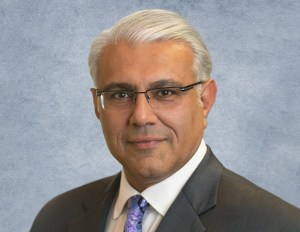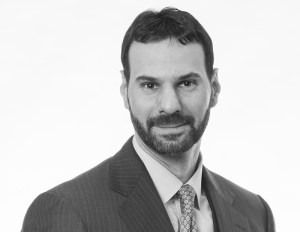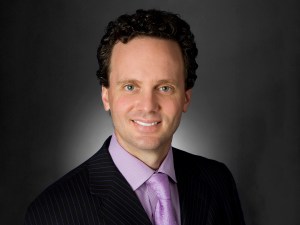Commercial Real Estate Braces for Interest Rate Hike
What does the Fed's move mean for the industry? Experts assess what's next.
For a while now, the commercial real estate industry has been bracing for interest rate hikes this month—the first increase since before the pandemic began. But record high inflation and a war in Ukraine which spiked energy prices prompted the Federal Reserve to take a more cautious approach last week when it raised the baseline interest rate.
“The last thing they want to do is surprise markets or investors,” Marcus & Millichap President & CEO Hessam Nadji told Commercial Property Executive. “I do think that the plan for later in the year could include some 50-basis-point moves if we continue to see the high readings on inflation. I would not rule that out, and I think the market should be prepared for that.”
Like Nadji, JLL chief economist Ryan Severino accurately predicted the 25 basis-point hike.
“I felt that once the Fed was going to start tightening, even in the face of elevated inflation, they were going to do so cautiously, but responsibly,” he said. “I didn’t think there was a need for the shock and awe of 50 basis points. It seemed like there was more potential trouble associated with that than just coming out of the gate with a 25 basis-point increase.”
Sabina Reeves, global chief economist at CBRE Investment Management, said that there was plenty of debate before the war in Ukraine about whether the March rise would be a 25 or 50 basis-point. Just prior to the conflict, the market may have been pricing in a 50 basis-point increase.
READ ALSO: Finance Leaders Paint Bright Picture at CREFC Conference
Reeves said that central banks around the globe have been increasingly nervous about inflation and how it feeds into wage and price inflation. Inflation concerns had caused both the European Central Bank and Fed to become a bit more hawkish, even before the war in Ukraine exacerbated energy price inflation, she said.
“What you’ve seen really since the global financial crisis is a lot of coordinating among the central banks,” said Reeves, who is based in London. “Typically, the central banks do talk amongst themselves and try to act in a coordinated way. I imagine you will see them move in step.”
On March 10, the ECB said it would begin phasing out its bond-buying program by September or earlier and also indicated there would at least one interest rate hike later this year.
“That was an interesting signal that central banks will continue to tighten maybe in a more measured way,” Reeves said.
The inflation challenge
Back in the U.S., the Fed is walking a fine line as it attempts to curb inflation, which hit nearly 8 percent in February, a 40-year high.
“The Fed is trying to deal with inflation in a very uncertain world while at the same time trying not to raise rates so much to push the economy into recession, which clearly is a real risk. In fact, it’s leaning more in that direction,” said Joseph LaVorgna, Natixis’ chief economist, Americas.
LaVorgna said that higher than anticipated inflation and the war in Ukraine added more levels of uncertainty to the economy, particularly higher energy prices due to shortages in supplies.
“You have a situation where inflation is actually higher than people thought and it looks like the situation in Ukraine, among many things, could also extend the time for which inflation stays higher,” he said. “Perhaps even though it’s still likely to slow by spring/summer, the rate of slowdown may not be as quick because of the persistence of these supply disruptions.”
Nadji noted commodity prices could fall dramatically, relieving inflationary pressures and brightening the global economic outlook if the conditions change soon in Ukraine.
“Hopefully there’s an immediate solution or at least a cease fire,” he Nadji. “In that scenario, which will hopefully come to fruition, the Fed is going to have to raise interest rates if not aggressively at least on a steady basis throughout this year because we’ve had this long period of time where rates have been so low.”
How many more hikes?
Economists are undecided on how many more times this year the Fed will raise interest rates. LaVorgna said he was not sure how many to expect after May, which he thinks could see a 50 basis-point increase.
“It’s not clear to me if they’ll go three or four or five,” he said.
Reeves suggested that the Fed could choose to go with four to six hikes of 25 basis points each, assessing the market reaction between increases. “It would have been at the lower end of that before the war and now maybe toward higher end,” she said.
Severino said six or seven interest rate increases, as some economists have suggested, this year sounds “a bit extreme.”
“My general sense is they’re going to try to be careful and consistent especially because we’re dealing with a new variable in the equation that we really haven’t dealt with in a really long time with the situation in Europe,” he said.
Severino said his model for what the market could bear is in the 200- to 300 basis-point range, noting that increases would be coming from a low starting point.
“I don’t think they will be able to raise in such a way that becomes too uncomfortable for the sector,” he said.
Nadji pointed to a recent Marcus & Millichap investor survey which showed it would take another 100 basis-point hike from a low of around 2 percent to 2.9 or 3 percent on the 10-year Treasury before the investment community would start to pull back from acquisition plans.
“The percentage of people who said they would probably reduce acquisitions increased substantively at that level but not below that level. So, it seems like there’s a lot of room in the market for interest rates to go up further,” he said.
The survey found that at a 50 basis-point rate increase, 70 percent of investors said there would be no change in their acquisition plans. It dropped to 67 percent of investors saying they would not change plans for a 100 basis-point increase. It was nearly evenly split at a 150 basis-point increase, with 48 percent saying no change and 46 percent saying they would buy less. A 200 basis-point increase would cause 63 percent of respondents to buy less, and a 250 basis-point increase would cause 67 percent of those surveyed to buy less real estate.












You must be logged in to post a comment.